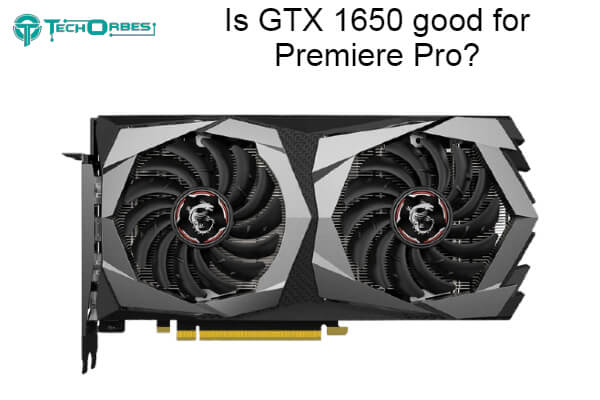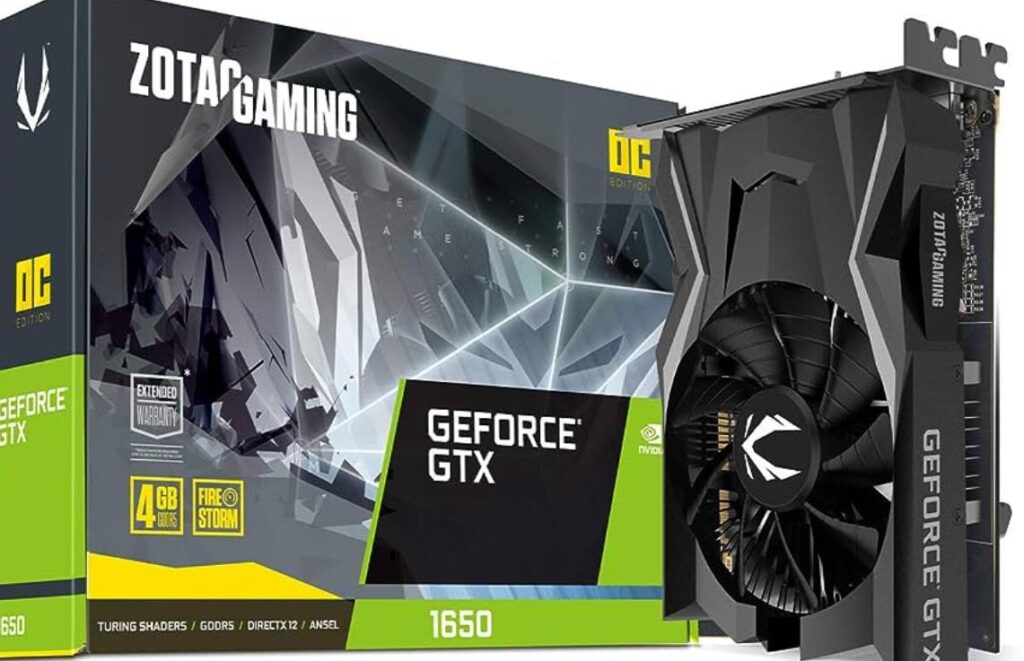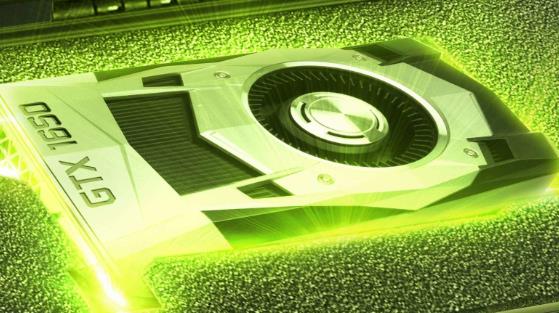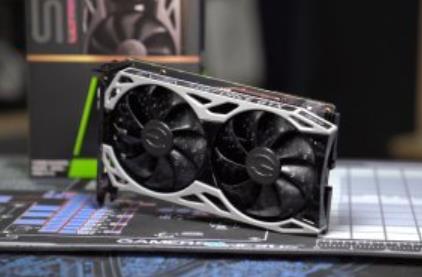Is GTX 1650 Good For Premiere Pro? Quick Answer
The decision between AMD and Nvidia for this particular use is pretty common when selecting the finest graphics card for video editing. But the main question arises Is GTX 1650 Good For Premiere Pro? When buying a graphics card for editing videos, you should remember that both firms employ various architectures, so there are undoubtedly some differences in speed and optimization.
The performance disparities between the two in video editing have gotten smaller over the past few years. Nvidia’s CUDA architecture, which was well-supported and optimized for Adobe applications, used to give it a major advantage over AMD.
However, regarding performance and optimization, AMD OpenCL and Nvidia CUDA are now very neck-and-neck. While both GPUs perform comparably in DaVinci Resolve, Nvidia continues to have a little optimization advantage over AMD in Adobe Premiere Pro.
Keeping this in mind, if you intend to use Premiere specifically for professional video editing, you should consider a graphics card that leans a little more towards Nvidia. AMD is not a horrible option either, and if you can find a comparable performance AMD graphics card at a better price, you shouldn’t have any reservations about choosing that option.
Is GTX 1650 Good For Premiere Pro?
The GTX 1650 is a good option for an editing setup, The GTX 1650 Super is a wonderful option if you require an entry-level GPU even if you intend to upgrade later. The GTX 1650 Super really seems fairly impressive on paper.

It makes use of the same TU116 processor as the 1660 Super. It has 4GB of GDDR6 RAM, 1280 Cuda Cores, and a 1725MHz Boost Clock. This card has never been an entry-level card. But what level of performance can you reasonably anticipate from this card for video editing?
You’ll get good performance out of it in 1080p films and some light 4K footage for Adobe Premiere and After Effects. It’s remarkable how fluid your entire system can be if you match it with a good enough processor. However, when you launch DaVinci Resolve, things start to falter.
The 1650 Super can keep up with DaVinci Resolve’s high GPU resource requirements, but it’s not as fluid as one might like. Nevertheless, the best inexpensive graphics card for video editing is this one if you use Adobe Premiere or other Adobe programs.
Is The Nvidia Geforce GTX 1650 Good For 4k Video Editing?
Did you say exporting? Because in-editor editing needs a really, really strong CPU, Six cores for 4K looks absurd (As 4 (4 GHz) cores are even aren’t enough for 720p 20Mbps in-editor editing).

You should be OK with a 1650 or even a 1050Ti OC card, which has 700–800 CUDA Cores and is adequate for 4K60FPS exports. Using NVENC over 1050Ti on 4K60FPS via Bilinear Interpolation, I have completed a significant number of exports. And a 1050Ti runs admirably up to about 70% utilization.
The CPU is still only using 20 to 25 percent of its capacity. However, you will still require a more powerful CPU. I advise purchasing a Ryzen 7 processor, regardless of whether it is an old scale 2700, 1700X, 1800X, or professional 3700X model. Any midrange GTX card will work OK for 4K60FPS editing, however, it’s ideal to have your CUDA Core count at 1000 or more.
is gTX 1650 good for 4K video editing?
The GTX 1650 can handle 4K video editing to some extent, but it might struggle with more complex projects or when applying multiple effects and transitions. Here are some considerations:

Advantages
- The GTX 1650 can provide hardware acceleration for 4K video editing tasks, which can improve rendering times and real-time playback compared to using just the CPU.
- It’s suitable for basic to moderate 4K video editing, such as trimming, cutting, and applying basic color correction.
Limitations
- The GTX 1650 has 4GB of VRAM, which may be limited for handling larger 4K projects, especially when applying multiple effects.
- Complex projects with multiple layers, effects, and high-resolution footage might result in reduced performance.
- For smoother performance and handling more demanding 4K projects, a higher-tier graphics card with more VRAM and processing power would be beneficial.
If you’re planning to work extensively with 4K video editing and you have the budget, considering a more powerful graphics card with greater VRAM and processing capabilities could lead to a better overall editing experience.
Rendering 4k video on a GTX 1650
Rendering 4K video on a GTX 1650 is possible, but it might take longer compared to using more powerful graphics cards. Here are some things to consider:

- Hardware Acceleration: The GTX 1650 does provide hardware acceleration for video rendering, which can significantly speed up the process compared to using just the CPU.
- Rendering Time: Rendering time depends on various factors, including the length of the video, complexity of effects, transitions, and software settings.
- Performance Settings: Adjust the performance settings in your video editing software. Some software allows you to customize how much the GPU is utilized during rendering.
- Video Format and Codec: The choice of video format and codec can impact rendering speed. Some codecs might be more GPU-friendly than others.
- VRAM Limitation: Keep in mind that the GTX 1650 has 4GB of VRAM, which might be a limitation when working with larger 4K projects or projects with heavy effects.
- Optimize Effects: If possible, optimize and simplify effects and transitions to reduce the rendering load on the GPU.
- Background Tasks: Close unnecessary applications and background tasks to ensure the maximum available resources are allocated to rendering.
While the GTX 1650 can handle rendering 4K videos, for optimal performance and faster rendering times, especially with larger and more complex projects, a higher-tier graphics card with more VRAM and processing power is recommended.
Is the Nvidia GeForce GTX 1650 graphics card suitable for major video editing softwares?
The Nvidia GeForce GTX 1650 graphics card is suitable for major video editing software, but its performance may vary depending on the complexity of your projects and the specific software you’re using. Here’s how the GTX 1650 fares for video editing:
Basic to Mid-Level Editing: The GTX 1650 is capable of handling basic to mid-level video editing tasks. This includes tasks like cutting, trimming, adding simple transitions, and basic color correction. It provides hardware acceleration that can speed up rendering times and real-time playback.
HD and Full HD Editing: For projects in HD (1080p) and Full HD resolution, the GTX 1650 can handle most tasks smoothly. It’s well-suited for editing videos intended for online platforms and general use.
4K Editing: While the GTX 1650 can handle 4K video editing, its performance might be limited for more demanding projects, especially when applying multiple effects, color grading, and using complex compositions.
Effects and Transitions: Basic effects and transitions should work well with the GTX 1650. However, heavy use of advanced effects or real-time playback of multiple layers might strain the card.
VRAM Consideration: Keep in mind that the GTX 1650 typically has 4GB of VRAM. This can be limiting when working with larger and more complex projects, especially in higher resolutions.
If you’re a professional video editor working on complex and high-resolution projects, you might consider a higher-tier graphics card with more VRAM and processing power. However, if you’re working on standard editing tasks and smaller projects, the GTX 1650 can provide a satisfactory experience, especially if it’s within your budget.
Does GTX 1650 encode/render videos at better speed/performance than RX 6500 XT?
The Nvidia GeForce GTX 1650 and the AMD Radeon RX 6500 XT are from different generations of graphics cards. The RX 6500 XT belongs to AMD’s RDNA 2 architecture, which is a more recent and advanced architecture compared to the GTX 1650’s Turing architecture.
Generally, newer graphics card architectures tend to offer better performance in video encoding and rendering tasks due to improved hardware and technologies. However, the specific performance comparison between the GTX 1650 and RX 6500 XT would depend on various factors, including clock speeds, core counts, VRAM, and driver optimizations.
If you’re looking for better video encoding and rendering performance, the RX 6500 XT is likely to offer better performance compared to the older GTX 1650. However, I recommend checking benchmark tests and reviews for the specific applications and tasks you’re interested in to get the most accurate and up-to-date information on performance comparisons between these two graphics cards. Keep in mind that newer graphics cards might have been released since my last update, so it’s a good idea to look for the latest information from reliable sources.
Conclusion
To sum up, Is GTX 1650 Good For Premiere Pro? In comparison to the GTX 1050ti, the Nvidia GTX 1650 is a much more potent card. You can modify the card; however, I advise choosing a different card for highly sophisticated editing. The GTX 1650 is sufficient for routine 1080p video editing.
However, I would advise you to use a card not lower than GTX 1660ti for 4K editing. A major impact is on render time. The GTX 1650 Super is a wonderful opportunity for an editing setup if you need an entry-level GPU and want to upgrade in the future.
Frequently Asked Questions
Is GTX 1650 sufficient for editing videos?
The GTX 1650 graphics card with the package is a great GPU for beginning video editing. With its 4GB of video capacity, you can speed up effects and make your editing process more efficient.
Does Premiere Pro work with the GTX 1650?
1650 is the fundamental architecture and should be supported. I’m sure you can find a list on Adobe for After Effects, even though this is a list for Premiere Pro. Given how urgent the need is, I believe you can presume that it will also work for AE.
Is the GTX 1650 suitable for editing 1080p video?
Compared to the GTX 1050 Ti, the Nvidia GTX 1650 is a much more potent card. You can modify the card; however, I advise choosing a different card for highly sophisticated editing. The GTX 1650 is sufficient for routine 1080p video editing. However, I would advise you to use a card not lower than GTX 1660ti for 4K editing.
Is the 4K video supported by the GTX 1650?
The answer is that a 4K video will run well on the GeForce GTX 1650 Ti OC version.

Since childhood, I’ve been fascinated by computer technology, and have experimented with a variety of hardware and software. It was a dream come true to graduate from a renowned university with a degree in computer engineering, which made it possible for me to pursue my dreams swiftly.
